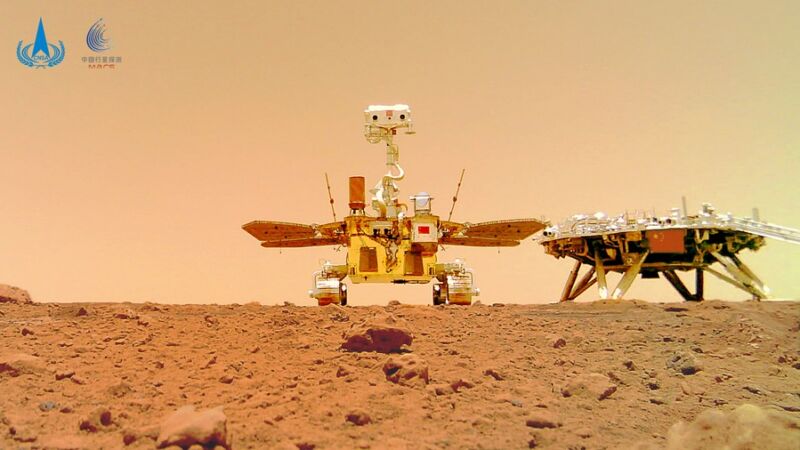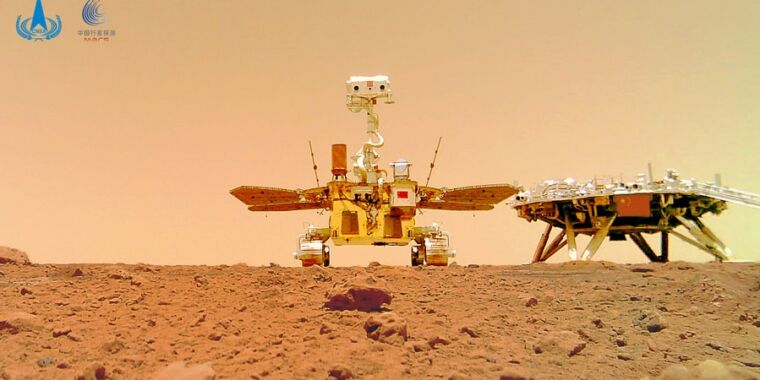
China plans to launch two heavy-lift Long March 5 rockets in 2028 carrying components for the Tianwen-3 mission to bring back samples from Mars, the mission's chief designer said Thursday.
In a presentation at a Chinese space conference, the chief designer of China's robotic Mars sample return project described the mission's high-level design and outlined how the mission will collect samples from the Martian surface. Reports of the talk published on Chinese social media and by state news agencies were sparse in technical detail and did not discuss any of the mission's preparations.
Public statements by Chinese officials about future space missions usually come true, but China is making bold attempts to explore the moon and Mars. China wants to land astronauts on the lunar surface by 2030, as a step toward eventually building a lunar base called the International Lunar Research Station.
Liu Jizhong, chief designer of the Tianwen-3 mission, did not say when China might have Mars samples back on Earth. Previous updates on the Tianwen-3 mission have fluctuated between 2028 and 2030, with officials previously suggesting the return mission would take about three years. That would suggest Martian rocks could return to Earth around 2031, assuming the launch happens on time in 2028.
NASA, meanwhile, is busy revamping its architecture for a Mars sample-return mission in partnership with the European Space Agency. In June, NASA tapped seven companies, including SpaceX and Blue Origin, to explore ways to return Martian rocks to Earth for less than $11 billion and before 2040, the cost and schedule for NASA's existing Mars sample-return plan.
That's too expensive and too long to wait for the return of Mars samples, NASA Administrator Bill Nelson said in April. Returning Mars samples is a top priority for NASA's planetary science division and has been in the planning stages for decades. The Perseverance rover currently on Mars is collecting dozens of samples of powdered rock, soil and Martian air in cigar-shaped titanium tubes for eventual return to Earth.
This means that China has a chance to become the first country to bring pristine samples of Mars back to Earth. But China does not plan to stop there.
“If all the missions go according to plan, China will probably be the first country to return samples from Mars,” Wu Weiren, chief designer of China's lunar exploration program, said in an interview with Chinese state television in July. “And we will explore giant planets, such as Jupiter. We will also explore some asteroids, including asteroid sample return missions, and build an asteroid defense system.”
The asteroid sample return mission is known as Tianwen-2 and is scheduled for launch next year. Tianwen means “asking the heavens.”
China currently has no mission to Mars to collect material for its Tianwen-3 sample return mission. The country’s first Mars mission, Tianwen-1, landed on the Red Planet in May 2021 and deployed a rover called Zhurong. The Chinese space agency has not released an update on the rover since 2022, suggesting it may have succumbed to the harsh Martian winter.
The Tianwen-3 mission will therefore carry everything needed to land on Mars, collect samples, package them for return to Earth, and then launch them back into space from the Martian surface. The sample carrier will then rendezvous with a return vehicle in orbit around Mars. Once the return spacecraft has the samples, it will break out of Mars orbit, fly through the solar system, and release a return capsule to bring the Martian samples back to Earth.
All equipment for the Tianwen-3 mission will be launched on two Long March 5 rockets, the most powerful operational launcher in the Chinese fleet. One Long March 5 will launch the lander and ascent vehicle, and another will launch the reentry spacecraft and Earth return capsule towards Mars.
Liu, chief designer of Tianwen-3, said an attempt to retrieve samples from Mars would be the most technically challenging space exploration mission since the Apollo program, according to China's state news agency Xinhua. Liu said China will abide by international agreements on planetary protection to protect Mars, Earth and the samples themselves from contamination. The main scientific goal of the Tianwen-3 mission is to search for signs of life, he said.
Tianwen-3 will collect samples using a robotic arm and a subsurface drill. Chinese officials have previously said the mission may carry a helicopter and a mobile robot to collect a wider variety of Martian materials, farther away from the stationary lander.
Liu said China is open to placing international payloads on Tianwen-3 and will work with international scientists to analyze the Martian samples the mission brings back to Earth. China is making lunar samples brought back by the Chang'e 5 mission available for analysis by international researchers, and Chinese officials have said they expect a similar process to be used to loan samples from the far side of the moon brought back by the Chang'e 6 mission earlier this year.

